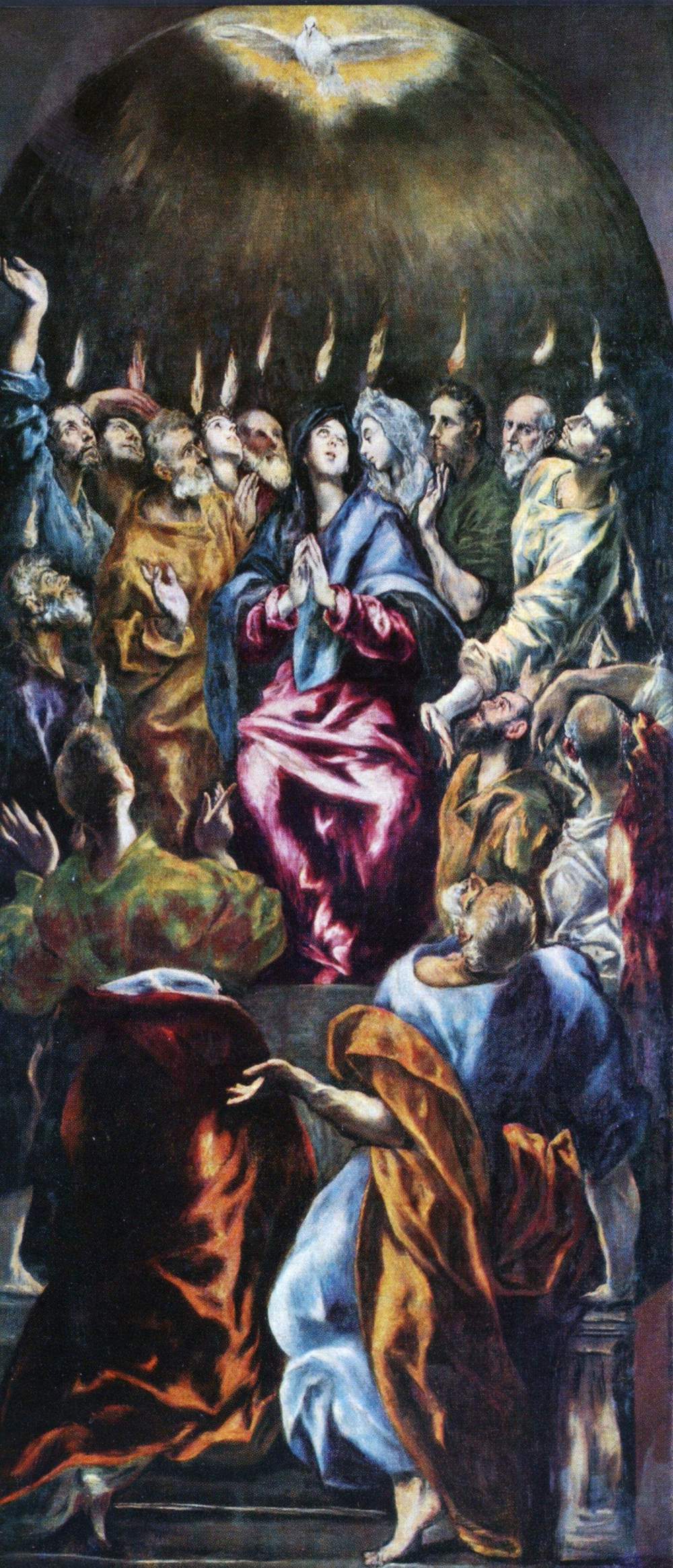In the Christian calendar today is Pentecost Sunday, so this week’s picture is Pentecost by Domenikos Theotokopoulos, better known as El Greco. The Cretan-born artist, who spent the years of his maturity in Toledo, in Spain, created the work in about 1600. Most El Greco scholars believe that it was created as part of a multi-panelled altarpiece commissioned for the Colegio de Dona Maria de Aragon, an Augustinian seminary in Madrid for the training of priests. That splendid altarpiece, for which El Greco had received the unprecedented sum of almost 6,000 ducats, was dismantled in 1810, during the French occupation, when Joseph-Louis Bonaparte suppressed the Spanish religious orders. Nowadays, Pentecost is to be seen in the Prado Museum, in Madrid. It is one of the masterpieces of the artist’s late and so-called “mystical” style – a style memorably dismissed by the eighteenth-century Spanish art theorist, Palomino, as “the Greek’s extravagant manner.”
The Christian feast of the Pentecost has been observed with special veneration from at least as early as the fourth century. Its symbolic significance is immense, since it is believed to mark the miraculous inauguration of the Church – the moment when the Holy Spirit descended upon the Apostles, transforming them from the humble followers of Jesus into dynamic, preaching missionaries, the spiritual leaders of a new and still embryonic Christian community. For this reason, El Greco’s depiction of the subject would have been regarded as eminently suitable matter for contemplation by the budding priests and missionaries of an Augustinian seminary in Madrid. The Counter-Reformation Catholic church gave great prominence to Pentecost, because its themes chimed so closely with its own most cherished values – emphasising the antiquity of the organised church and the importance of a special, priestly class of individuals charged...


